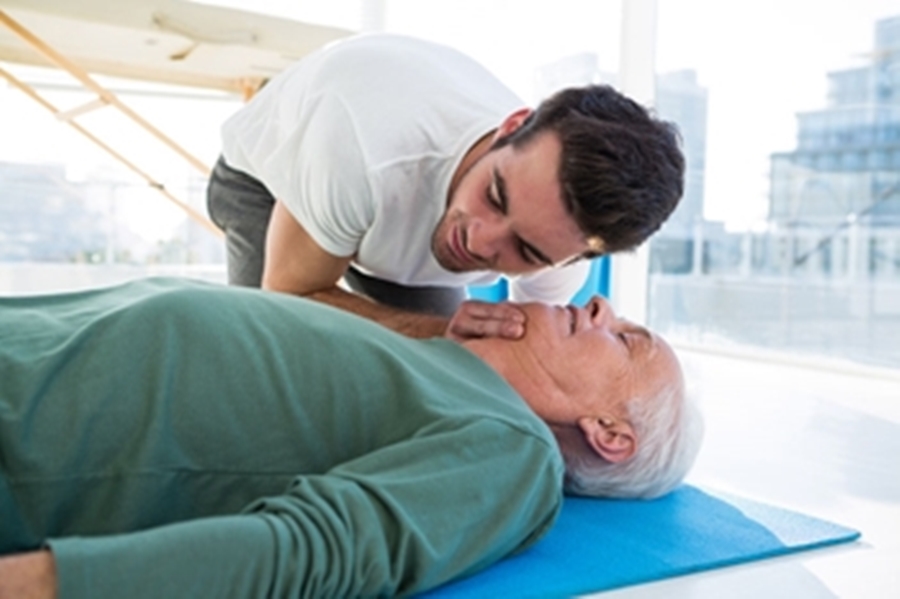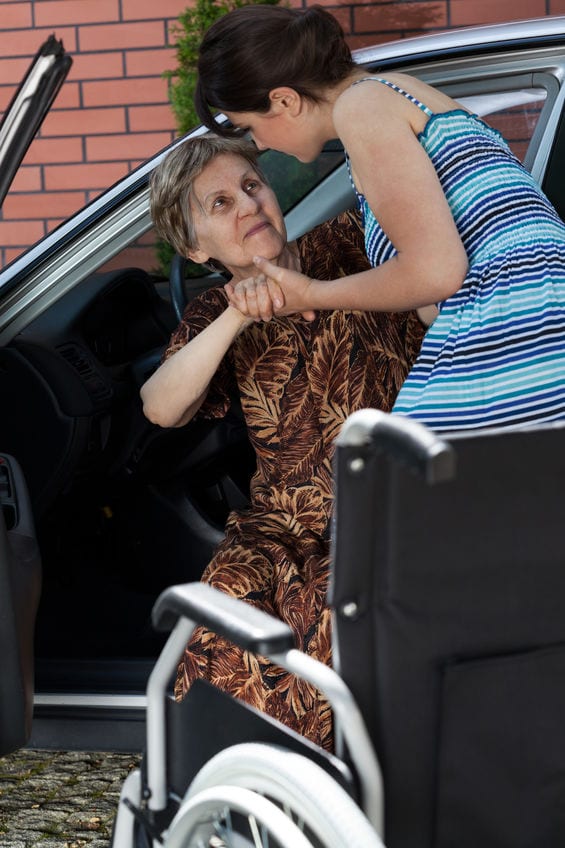Emergency Airway Management Techniques
Airway Obstructions -Choking
Emergency airway management for choking focuses on helping individuals use their natural reflexes to cough out what is choking them or create an artificial cough using the Heimlich maneuver. Though tempting, do not slap someone on the back who is coughing while choking.
When we get an irritant (anything that should not be in the lung) in the lung, it stimulates a cough reflex. When we cough, the lungs open wide, trying to throw out the “trash” while expelling air. Hitting someone on the back may reduce the natural rhythm of the lung’s efforts to clear itself.
The Body’s Emergency Airway Management Process in Action
- Coughing creates increased internal pressure.
- It forces air upward and outward.
- Mucous, aspirations (things swallowed into the lung by accident), irritants (chemicals, allergies, drugs), obstructions (something blocking), etc., exit the lungs as the pressure builds and explodes out of the airway with the cough’s release.
Since God blessed us with such an effective emergency airway management system, if someone coughs forcefully, our best choice is to stand by, not interfere, and offer assistance only if it does not work.
If a severe obstruction develops and emergency airway management fails, prompt intervention becomes necessary. The absence of air in the brain can lead to death in 4-6 minutes. Therefore, if you ask someone struggling to breathe, “Can you speak,” and (silence) occurs, follow the instructions outlined under
“Heimlich Maneuver Procedure–Conscious Adult or Child.”
Know Your ABCs
When learning to provide emergency airway management, one of the ways we remember the steps is to think of A-B-C. A=Airway, B= Breathing, C=Circulation.
Check for Obstructed Airway First
A-Airway, i.e., emergency airway management, comes first in the sequence. If someone is not breathing, the first thing to rule out has to do with airway obstruction. Do they have something stuck in their throat preventing air from getting through? Therefore, doing a check for airway obstruction becomes the priority.
Breathing Next
If an obstructed airway is identified, using the Heimlich Maneuver is the best way to remove the blockage. If you find the airway is clear but you are still not breathing, you need to start breathing for them. B-Breathing using rescue breathing techniques.
Check for a Pulse Last Before Starting Compressions
Oxygen cannot circulate without a pulse. Therefore, a heartbeat must be present. The letter “C” stands for circulation and requires chest compressions (pushing down on the chest) to begin if a pulse is absent.
Emergency Response Techniques
The Emergency Response Techniques post videos show you how to perform the emergency techniques. However, I encourage you to go one step further and take an online class and learn how to do them yourself. Protrainings has offered our readers a 10% discount on their online courses if they use the discount code posted on that page when signing up. I hope you will consider taking advantage of their offer even if you only take the training course, not the hands-on portion because anything you learn will help prepare you for an emergency.
Emergency Airway Management – Rescue Breathing
If you discover someone lying on the ground who appears unconscious, check to see if they are breathing.
- Put your face close to their mouth to determine if you hear or feel air coming from their mouth or nose.
- Then, shout while shaking them to see if they respond.
- If they do not, place your fingers from one hand on their chin and the heel of your other hand on their forehead. Then, lift the person’s chin while tilting their head back to open their airway.
- Lean in close to their mouth to listen and check again for breathing.
- If they are not breathing, pinch their nose and cover their mouth with your mouth. (If this is a stranger, you would want to use a protective device to cover their mouth before making direct contact).
- Note: You want your lips to be soft rather than firm, loose, and relaxed rather than tight as you attempt to form a seal around your family member’s mouth. Tight lips prevent you from making a good seal around the mouth.
- If you hear a squeak, the air is leaking out. Try to reposition your mouth for a better seal. Adjust the position of your mouth on theirs until you can blow in enough air to see their chest rise.
- Once their chest rises, give a breath once every three-five seconds.
There are multiple options to obtain training in emergency response techniques. Below are links to three.
*******************
American Heart Association
******************
American Red Cross
******************
Heimlich Maneuver as Emergency Airway Management for Adult or Child
How do you know if you need to use the Heimlich Maneuver?
If you believe someone may be choking, ask them if they need help. If they attempt to answer you and can’t, there’s your answer. A person cannot speak with a completely blocked (obstructed) airway. Call 9-1-1 to get help right away and begin the steps for the Heimlich maneuver.
- Standing behind the person, wrap your arms around their waist. Make a fist with one hand. Place the thumb against the abdomen slightly above the belly button and below the xiphoid process (tip of the breastbone). Then grasp your fist with the other hand.
(Note: If the person is pregnant or can’t get your arms around their belly, you can put them under their armpits and encircle their chest doing chest thrusts instead of abdominal thrusts. In that case, set your clenched fist against the middle of the sternum avoiding the margins of the ribs.)
- Squeeze the person’s abdomen using quick inward and upward thrusts. Each thrust should be a separate and distinct movement. In addition, each thrust should be forceful enough to create an artificial cough to dislodge the object.
- Continue providing thrusts until the obstruction clears or until the person passes out.
- If the person stops breathing, begin emergency respiratory breathing.
Heimlich Maneuver Procedure – Unconscious Adult or Child
- If the person becomes unconscious while attempting to remove the obstruction, carefully help them to the floor.
- If someone has not called 9-1-1 yet, make sure someone does now.
- Tilt the person’s head back to open the airway. Check for breathing and a pulse. If either is missing, begin CPR.
Infant Choking
1 Look in the infant’s mouth to see if anything is present but do not put your finger in the mouth.
2 Lean the infant facedown, so they are straddling your arm with their head lower than their trunk. Rest your forearm on your thigh and deliver five back blows with the heel of your hand between the infant’s shoulder blades.
3. If that does not remove the blockage, turn them over.
4. Supporting their head, jaw, and chest, lean the baby’s head over your thigh and give chest thrusts between the nipple lines on the sternum (breastbone). Use only two fingers (index and middle finger) for chest compressions.
5. Repeat until the airway is clear or the infant becomes unconscious.
Rescue Breathing Unsuccessful; Pulse Stops–What Next?
Risk of Death with Loss of Pulse
When choking victims become unconscious, they relax, and their jaw muscles open wider, often allowing the object to become unblocked. Sometimes, the object falls out of the victim’s mouth. However, other times, the object is stuck so tightly that it won’t come out, and no air can get through. When that happens, all you can do is try to help them breathe.
As you continue to watch them for any sign of breathing, you must also check for a pulse. Once the person has been without oxygen for a minute, the heart slows and stops beating within seconds. Therefore, CPR must start promptly to prevent possible damage from oxygen loss.
Do You Know CPR?
If you don’t know how to perform CPR, I recommend enrolling in a Cardiopulmonary Resuscitation (CPR) class. Taking CPR may be outside your comfort zone, but knowing what to do in an emergency is important. If you are afraid to take the class because the thought of being tested or performing in front of someone is intimidating, it’s time to reconsider. Performing in front of others is not nearly as scary as not knowing what to do when someone dies before you.
When an emergency happens, most people need to do something to help. You might be the only reason someone stays alive by CPR until a rescue crew arrives. Even if you don’t perform CPR perfectly, it may be good enough. Knowing what to do and doing it best is enough to help someone survive.



